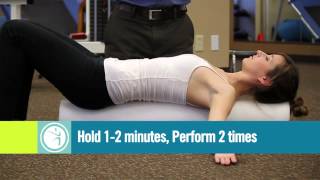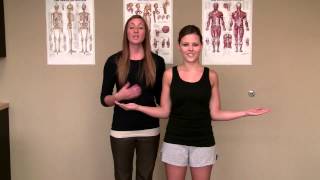Pain 101: Chronic Pain
What is Chronic Pain?
Chronic pain is pain that persists or progresses over a period of time greater than six months. The experience of pain extends beyond the expected healing time for an injury and limits participation in normal daily activities. Chronic pain can range from minimal to severe and include joint, muscle, neck, and low back pain, headache, neurogenic pain (pain due to nerve or central nervous system damage), visceral pain (pain that comes from the body’s organs), and fatigue.
Types of Chronic Pain
Neck Pain & Headaches
Neck pain and headaches are on the rise with the increase of people using computers, sitting at work, and long drives to work. This pain can be nagging and debilitating, preventing one from enjoying their daily activities.
Poor Posture
Poor posture is the leading cause of chronic pain. This can lead to pain in different parts of the body, especially in the neck, back, and shoulders. Abnormal posture leads to strength and flexibility imbalances in the body which cause increased stress on structures that are not capable of withstanding these added forces for prolonged periods.
Back Pain
Back pain is one of the leading complaints of pain. Minor back injuries often become severe and chronic and can lead to disc and nerve involvement. Chronic back pain can limit one’s ability to sit or stand for long periods, work, or enjoy life.
Past Injuries
Past injuries that do not heal correctly may lead to compensations in an individual’s ability to perform everyday activities. Common injuries that lead to chronic pain include joint, back, neck and spinal cord injuries. These injuries may also lead to degenerative conditions including arthritis that cause chronic pain.
Being Overweight
Being overweight puts excessive strain on the back, knees, and ankles that can lead to chronic pain over time.
Diseases
Rheumatoid arthritis, osteoarthritis, fibromyalgia, shingles, sciatica, spinal stenosis, carpel tunnel syndrome and cancer can lead to chronic pain.
STEPS TO CHRONIC PAIN RELIEF
1
HEAT
Cold/heat, ultrasound, and electrical stimulation are used to decrease pain and relax the muscles.
2
STRETCH
Increasing range of motion and flexibility will help decrease the stress on areas of your body that are unable to withstand the forces that are contributing to your chronic pain.
3
EXERCISE
Remaining in the same position for a prolonged period or being sedentary can increase stiffness and pain. Activities that require physical exertion are beneficial to get your body moving and treat chronic pain.
4
PHYSICAL THERAPY
Physical therapy consists of hands-on treatment to loosen muscles and joints, education on proper posture and movement to decrease pain, instruction on stretching and strengthening exercises to restore mobility and strength, and modalities such as electrical stimulation, heat, and ultrasound.
CHRONIC PAIN EXERCISES
Following are a few exercises you can perform that may help alleviate pain. Please go to LIFE+ for more videos that may help you. Please consult your physician before trying these, and stop if you experience any pain or discomfort.






